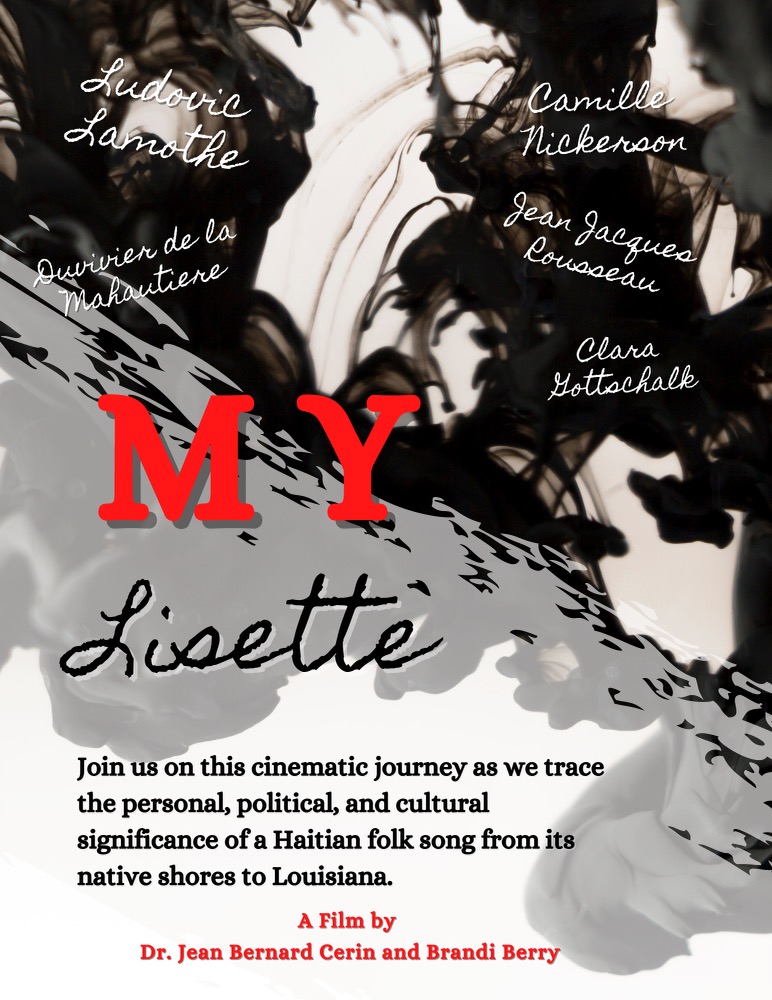
Dr. Jean Bernard Cerin, assistant professor at Lincoln University, is using both his musical and academic skills to follow the historical thread of a popular folk tune born in Saint Domingue (colonial Hispaniola) in 1757.
The song was first published with French lyrics in 1781 in a collection of writings by Jean-Jacques Rousseau. It was titled Chanson Negre. Paroles fournies par M. De Flammanville.
Cerin, a popular baritone in the Philadelphia area, has devoted his academic research to this intriguing song attributed to Duvivier de la Mahautière.
On the island of Saint-Domingue, where the song began its parodic life, the political situation was in turmoil. The French territory, much prized for its luxuriant crops of sugar, coffee, and indigo, had become a profitable trade partner for its minority white European residents and was courted and prized by the newly independent United States, while Napoleon and French privateers made millions on ships leaving the island.
The song arrived in Philadelphia in the hands of a Creole refugee from Martinique who published it as Lisette quitté la plaine in 1797. He sold the complete volumes of his book, Description topographique, physique, civile, politique et historique de la partie française de l’isle de St. Domingue, at his shop on the corner of Front and Walnut Streets.
 For Napoleon, the island of Saint-Domingue was an important source of trade and profit, which he sought to use together with the Louisiana Territory to dominate trade a in the New World. Unfortunately for Napoleon, Toussaint L’Ouverture, a heroic giant in Saint-Domingue, organized a successful rebellion of enslaved residents and established a benevolent rule of the land. Haiti’s economy flourished while fearful white Creoles took refuge in Cuba, Louisiana, and Philadelphia. Napoleon, who wanted to recapture Haiti, sent an army to reconquer the island. The Haitians repelled the soldiers, so he gave up on his New World ventures and sold the Louisiana Territory to the Jefferson Administration.
For Napoleon, the island of Saint-Domingue was an important source of trade and profit, which he sought to use together with the Louisiana Territory to dominate trade a in the New World. Unfortunately for Napoleon, Toussaint L’Ouverture, a heroic giant in Saint-Domingue, organized a successful rebellion of enslaved residents and established a benevolent rule of the land. Haiti’s economy flourished while fearful white Creoles took refuge in Cuba, Louisiana, and Philadelphia. Napoleon, who wanted to recapture Haiti, sent an army to reconquer the island. The Haitians repelled the soldiers, so he gave up on his New World ventures and sold the Louisiana Territory to the Jefferson Administration.
With so many white and enslaved Creoles having fled to Louisiana, Lisette became part of the musical culture. Clara Gottschalk Peterson learned it from her nursemaid, an enslaved Haitian, and later, set Lisette to music in Creole Songs from New Orleans published by L. Grunewald in 1902.
The song remained a part of the musical life of Haiti, too. Haitian pianist Ludovic Lamothe (1882-1953) used the song Lisette as the basis for meringues which are still popular today.
Camille Lucie Nickerson, who was born in New Orleans in 1888, wrote her master’s thesis at Oberlin Conservatory entitled “Africa-Creole Songs of Louisiana”. Boston Music Company published her Lisette in 1942 as part of Five Creole Songs Harmonized and Arranged by Camille Nickerson. She made Lisette famous in her recitals as The Louisiana Lady.
Dr. Cerin was born in Haiti and was raised with the folk music and traditions of the island. He is also a specialist in early music, well-versed in style and performance of the early versions of Lisette, and has recorded a performance of the Jean-Jacques Rousseau setting with Les Delices. (Click here to hear his rich baritone as he sings Lisetto quitté la plaine in French with Les Delices in an arrangement by Debra Nagy).
Ms. Brandi Berry, Dr. Cerin’s colleague at Lincoln University and partner in the project, is an award-winning teacher whose film work has won a jury selection for African American Women in Cinema.
Dr. Cerin and Ms. Berry will present a preview of their work at the International Florence Price Festival on Saturday, August 21, 2021. To register for this event, go to pricefest.org.

For those who wish to delve into more information from the Lisette Project and learn about the ongoing research and hear recordings, please visit http://www.lisetteproject.org.